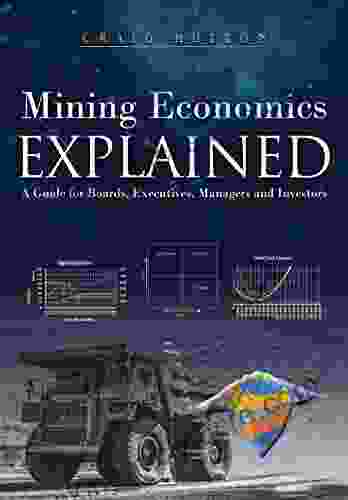A Comprehensive Guide for Boards, Executives, Managers, and Investors: Navigating the Complex Landscape of Corporate Governance

Corporate governance encompasses the system of rules, practices, and processes by which corporations are directed and controlled. It is a critical aspect of ensuring the stability, accountability, and transparency of organizations, protecting the interests of stakeholders such as shareholders, employees, and the public. This comprehensive guide provides a detailed overview of corporate governance best practices, aiming to empower boards, executives, managers, and investors with the knowledge and tools necessary to navigate the complexities of this multifaceted domain.
1. The Role of Boards of Directors
The board of directors is the governing body of a corporation, responsible for overseeing its operations and ensuring the alignment of management decisions with the interests of shareholders and other stakeholders. Key responsibilities of the board include:
4.1 out of 5
| Language | : | English |
| File size | : | 12714 KB |
| Text-to-Speech | : | Enabled |
| Screen Reader | : | Supported |
| Enhanced typesetting | : | Enabled |
| Print length | : | 287 pages |
- Setting the strategic direction of the company
- Overseeing the performance of the executive management team
- Monitoring financial reporting and internal controls
- Ensuring compliance with regulatory requirements
- Managing conflicts of interest and promoting ethical conduct
2. Board Composition and Structure
The composition and structure of the board of directors play a crucial role in its effectiveness. The following factors should be considered when building a strong board:
- Diversity: Boards should strive for diversity in terms of gender, race, ethnicity, age, experience, and skills.
- Independence: A majority of the board members should be independent directors, meaning they are not affiliated with the management team or major shareholders.
- Size: The optimal size of a board varies depending on the size and complexity of the company. However, boards typically range from 5 to 15 members.
- Committee structure: Boards often form committees to focus on specific areas such as audit, compensation, and governance.
3. Executive Management and Leadership
The executive management team is responsible for the day-to-day operations and strategic implementation within a corporation. Key roles include:
- Chief Executive Officer (CEO): The CEO is the highest-ranking executive responsible for the overall management and strategic direction of the company.
- Chief Financial Officer (CFO): The CFO is responsible for managing the financial operations of the company.
- Chief Operating Officer (COO): The COO is responsible for managing the day-to-day operations of the company.
4. Executive Compensation and Incentives
Executive compensation should be designed to align the interests of executives with those of shareholders and the long-term success of the company. Key considerations include:
- Base salary: The fixed annual compensation paid to executives.
- Bonuses: Performance-based incentives paid out in cash or stock.
- Stock options: The right to purchase shares of company stock at a fixed price, providing executives with a potential upside from increased share value.
- Long-term incentives: Performance-based awards designed to encourage long-term value creation.
5. Risk Management and Internal Controls
Effective risk management and internal controls are essential for safeguarding the assets and reputation of the corporation. Key elements include:
- Risk assessment: Identifying and evaluating potential risks to the company.
- Internal controls: Policies and procedures designed to mitigate risks and ensure compliance with laws and regulations.
- Internal audit: An independent function within the company that evaluates the effectiveness of internal controls and provides assurance to the board and management.
6. Stakeholder Engagement and Corporate Social Responsibility
Corporations are increasingly expected to engage with stakeholders, such as customers, employees, suppliers, and the community. Key aspects of stakeholder engagement include:
- Stakeholder identification: Identifying the individuals and groups affected by the corporation's operations.
- Stakeholder engagement: Creating channels for communication and dialogue with stakeholders.
- Corporate social responsibility (CSR): Embracing ethical and sustainable practices that benefit the broader community.
7. Investor Relations and Communication
Effective investor relations and communication are critical for attracting and retaining investors. Key strategies include:
- Financial reporting: Timely and transparent disclosure of financial information.
- Investor meetings: Providing opportunities for investors to meet with company management.
- Shareholder communication: Communicating with shareholders through newsletters, annual reports, and other channels.
8. Corporate Governance Frameworks
Various corporate governance frameworks have been developed to provide guidance to organizations. Some of the most widely recognized frameworks include:
- Sarbanes-Oxley Act (SOX): A U.S. law aimed at improving corporate governance and financial reporting.
- New York Stock Exchange (NYSE) Listed Company Manual: A set of requirements for companies listed on the NYSE.
- Organization for Economic Co-operation and Development (OECD) Principles of Corporate Governance: A set of best practices developed by the OECD.
9. Ethics and Compliance
Ethical conduct and compliance with laws and regulations are paramount for maintaining the integrity and reputation of the corporation. Key considerations include:
- Code of ethics: A written statement of ethical principles and guidelines for employees.
- Compliance programs: Policies and procedures designed to ensure compliance with laws and regulations.
- Whistleblower protection: Measures to protect employees who report illegal or unethical behavior.
10. Board Evaluation and Continuous Improvement
Regular board evaluations help ensure that the board is performing effectively and meeting its responsibilities. Key aspects of board evaluation include:
- Self-assessment: The board assesses its own performance against agreed-upon criteria.
- External assessment: An independent assessment is conducted by outside experts.
- Continuous improvement: The board uses the results of the evaluation to identify areas for improvement.
Corporate governance is an intricate and dynamic field that requires ongoing attention and effort from all stakeholders. By understanding and implementing best practices, boards, executives, managers, and investors can play a vital role in ensuring the stability, accountability, and transparency of organizations. Ultimately, effective corporate governance fosters trust, mitigates risk, and enhances the long-term success of corporations for the benefit of all stakeholders.
4.1 out of 5
| Language | : | English |
| File size | : | 12714 KB |
| Text-to-Speech | : | Enabled |
| Screen Reader | : | Supported |
| Enhanced typesetting | : | Enabled |
| Print length | : | 287 pages |
Do you want to contribute by writing guest posts on this blog?
Please contact us and send us a resume of previous articles that you have written.
 Fiction
Fiction Non Fiction
Non Fiction Romance
Romance Mystery
Mystery Thriller
Thriller SciFi
SciFi Fantasy
Fantasy Horror
Horror Biography
Biography Selfhelp
Selfhelp Business
Business History
History Classics
Classics Poetry
Poetry Childrens
Childrens Young Adult
Young Adult Educational
Educational Cooking
Cooking Travel
Travel Lifestyle
Lifestyle Spirituality
Spirituality Health
Health Fitness
Fitness Technology
Technology Science
Science Arts
Arts Crafts
Crafts DIY
DIY Gardening
Gardening Petcare
Petcare C L Werner
C L Werner Gary Thomas
Gary Thomas Seth Reichelson
Seth Reichelson Jay Greeson
Jay Greeson Geoffrey Wolff
Geoffrey Wolff Kristin Briney
Kristin Briney Andrew Greiner
Andrew Greiner Claire Maxted
Claire Maxted Leigh Bardugo
Leigh Bardugo Andrew Gelman
Andrew Gelman Patrick W Galbraith
Patrick W Galbraith Andre Watson
Andre Watson Andrew Doughty
Andrew Doughty Richard N Aufmann
Richard N Aufmann Tracy Townsend
Tracy Townsend Laura Domino
Laura Domino Peter David
Peter David Jonathan Clements
Jonathan Clements Bernard A Chavis
Bernard A Chavis Giada De Laurentiis
Giada De Laurentiis Vertamae Smart Grosvenor
Vertamae Smart Grosvenor Marvin L Bittinger
Marvin L Bittinger Oliver Perkins
Oliver Perkins Daniel P Murphy
Daniel P Murphy Whitney Nelson
Whitney Nelson Bruce Mcnall
Bruce Mcnall Francesca Zappia
Francesca Zappia Brandon Mull
Brandon Mull Baz Thompson
Baz Thompson Christian Keur
Christian Keur Roland Martin
Roland Martin Chiara Marletto
Chiara Marletto Arous Brocken
Arous Brocken Bruce Bowlen
Bruce Bowlen Lonely Planet
Lonely Planet Tod Schimelpfenig
Tod Schimelpfenig Bettina Bonifatti
Bettina Bonifatti Serena Valentino
Serena Valentino Julie Miller
Julie Miller Stan Tekiela
Stan Tekiela Jack Purdum
Jack Purdum Dr Gabriel Peter Salgo
Dr Gabriel Peter Salgo Sandra Glosser
Sandra Glosser Mara Vorhees
Mara Vorhees Andrej Spec
Andrej Spec Jeff Davis
Jeff Davis Timothy Johnson
Timothy Johnson Kindra Gordon
Kindra Gordon Andrea Bemis
Andrea Bemis David Scott
David Scott Mark M Meerschaert
Mark M Meerschaert James Willstrop
James Willstrop Jamie Ivey
Jamie Ivey J E Lendon
J E Lendon Andrea Cremer
Andrea Cremer Tillie Walden
Tillie Walden James Mallory
James Mallory Jed Z Buchwald
Jed Z Buchwald Patrick Hatt
Patrick Hatt James Branch Cabell
James Branch Cabell Tom Lecompte
Tom Lecompte David Abram
David Abram Catie Czora
Catie Czora Malinda Lo
Malinda Lo Richard Bellman
Richard Bellman Jack Hunnicutt
Jack Hunnicutt Andrea Flores
Andrea Flores Elizabeth S Meckes
Elizabeth S Meckes David W Brown
David W Brown Janet Wolanin Alexander
Janet Wolanin Alexander Matt Richtel
Matt Richtel Steven Johnson
Steven Johnson Tim Ryan
Tim Ryan Ruby Walker
Ruby Walker Nick Marshall
Nick Marshall Kevin Cook
Kevin Cook Dani Jacobs
Dani Jacobs Melissa Caughey
Melissa Caughey Rachel Atwood
Rachel Atwood Prasad Raju V V N R Pathapati
Prasad Raju V V N R Pathapati Ben Orlin
Ben Orlin Morihei Ueshiba
Morihei Ueshiba Joseph Terry
Joseph Terry Sunny Anderson
Sunny Anderson Ian O Connor
Ian O Connor Kirby Arnold
Kirby Arnold Arianna Astuni
Arianna Astuni Nick Peters
Nick Peters Bobby Orr
Bobby Orr Dot Edu
Dot Edu Jenny Mackay
Jenny Mackay Pietro Matracchi
Pietro Matracchi Linda Eyre
Linda Eyre Ronald J Harshbarger
Ronald J Harshbarger Stuart L Kaplan M D
Stuart L Kaplan M D Jason Zemcik
Jason Zemcik Lauren Daniels
Lauren Daniels Suzy Ashworth
Suzy Ashworth Nancy B Rapoport
Nancy B Rapoport Steve Scott
Steve Scott Christine Balaz
Christine Balaz Rich Luhr
Rich Luhr Annette Curtis Klause
Annette Curtis Klause Rachel Hawkins
Rachel Hawkins Caren Van Slyke
Caren Van Slyke Rajani Katta
Rajani Katta Jakub Marian
Jakub Marian Lynne L Finch
Lynne L Finch Ben Doughty
Ben Doughty Joe Posnanski
Joe Posnanski Terry Ann Williams Richard
Terry Ann Williams Richard Hampton Sides
Hampton Sides Stephen Wiggins
Stephen Wiggins Milo Stewart
Milo Stewart Sid Thatte
Sid Thatte Catherine Montgomery
Catherine Montgomery Lars Muhl
Lars Muhl Chris Salisbury
Chris Salisbury Peter Scazzero
Peter Scazzero Bernard Craw
Bernard Craw Paul Stamets
Paul Stamets Pliny The Elder
Pliny The Elder Victoria Schwab
Victoria Schwab C B Lee
C B Lee Trish Allison
Trish Allison Future Publishing
Future Publishing Michael Hermann
Michael Hermann Gillian Tett
Gillian Tett Wildlife Trusts
Wildlife Trusts Steven Poses
Steven Poses Robin Ha
Robin Ha Charles Szypszak
Charles Szypszak Jessica Mccrory Calarco
Jessica Mccrory Calarco Joseph Bruchac
Joseph Bruchac Keith Sutton
Keith Sutton Noel Janis Norton
Noel Janis Norton Erich Neumann
Erich Neumann Charlotte Elkins
Charlotte Elkins Greg Presto
Greg Presto Lundy Bancroft
Lundy Bancroft Kelsie Stelting
Kelsie Stelting Tim Wharnsby
Tim Wharnsby Charles H Hapgood
Charles H Hapgood Leslie Vedder
Leslie Vedder Andrea Komlosy
Andrea Komlosy Andrea Cataldo
Andrea Cataldo Rizwan Virk
Rizwan Virk V E Schwab
V E Schwab Kathleen Dean Moore
Kathleen Dean Moore Robert H Miller
Robert H Miller Ken Blanchard
Ken Blanchard Tony Herman
Tony Herman Thomas S Kuhn
Thomas S Kuhn Sandy Stott
Sandy Stott Joe Wells
Joe Wells Jen Calonita
Jen Calonita Dayton O Hyde
Dayton O Hyde Marissa Meyer
Marissa Meyer Gabrielle Coleman
Gabrielle Coleman Steve Bisheff
Steve Bisheff Joelle Charbonneau
Joelle Charbonneau Harriet Brown
Harriet Brown Neil Oliver
Neil Oliver James Fox
James Fox Raymond E Feist
Raymond E Feist Tom Siegfried
Tom Siegfried Candace Clark Trinchieri
Candace Clark Trinchieri Sean Pidgeon
Sean Pidgeon Susanna Kearsley
Susanna Kearsley Michele Leathers
Michele Leathers Kailin Gow
Kailin Gow Andrew Goliszek
Andrew Goliszek James E Wisher
James E Wisher Victoria Ortiz
Victoria Ortiz Josh Tabor
Josh Tabor Laurie Ann Thompson
Laurie Ann Thompson Jim Curran
Jim Curran Robert Bacal
Robert Bacal Garcilaso De La Vega
Garcilaso De La Vega Kerri Andrews
Kerri Andrews Donna Bollinger
Donna Bollinger James Dodson
James Dodson Michael Anderle
Michael Anderle Brenda Reed Pilcher
Brenda Reed Pilcher Steven M Fiser
Steven M Fiser Dana Mccullough
Dana Mccullough Rob Summers
Rob Summers James A Middleton
James A Middleton Jimmy Elliott
Jimmy Elliott Rashers Tierney
Rashers Tierney Will Thornton
Will Thornton Andrea Olson
Andrea Olson Margaret Thorsborne
Margaret Thorsborne Carmen Micsa
Carmen Micsa Ola Ola
Ola Ola Paco Underhill
Paco Underhill Mike Cyra
Mike Cyra Michio Kaku
Michio Kaku Antonio Iturbe
Antonio Iturbe Department Of Defense
Department Of Defense W J Hendry
W J Hendry Usa Pickleball Association
Usa Pickleball Association Joseph Luzzi
Joseph Luzzi Robyn Sheldon
Robyn Sheldon Bisco Hatori
Bisco Hatori Deaver Brown
Deaver Brown Roberto Pedreira
Roberto Pedreira Galen Wolf
Galen Wolf Sudhir Shirwadkar
Sudhir Shirwadkar Stacey Little
Stacey Little Matt Fulks
Matt Fulks Sara Manning Peskin
Sara Manning Peskin Dorothy Pang
Dorothy Pang Ed Willes
Ed Willes J David Logan
J David Logan Bonita Norris
Bonita Norris Buster Benson
Buster Benson Richard Bolstad
Richard Bolstad Paul Kalas
Paul Kalas Brad Schoenfeld
Brad Schoenfeld Andrew Feinberg
Andrew Feinberg Elizabeth Clor
Elizabeth Clor Shane Ryan
Shane Ryan Kelly Tyler Lewis
Kelly Tyler Lewis Gregory Curtis
Gregory Curtis M D Johnson
M D Johnson Aldous Huxley
Aldous Huxley Mark Hume
Mark Hume Andrea Hudy
Andrea Hudy John Ramirez
John Ramirez Eric Engle
Eric Engle Tom Lodziak
Tom Lodziak Steven H Weintraub
Steven H Weintraub Thomas Berger
Thomas Berger Andrea Gonzales
Andrea Gonzales Lisa Bond
Lisa Bond Necoco
Necoco Connie J Wells
Connie J Wells L Michele Issel
L Michele Issel Jonathan Cummings
Jonathan Cummings Lena Shev
Lena Shev Jefferson Hawkins
Jefferson Hawkins Peter Mcbride
Peter Mcbride Brian Azzarello
Brian Azzarello Elizabeth S Trafalgar
Elizabeth S Trafalgar Christine Heppermann
Christine Heppermann Stephen Chbosky
Stephen Chbosky Robert Hamill
Robert Hamill Romney Steele
Romney Steele Rick Westhead
Rick Westhead Robert B Yonaitis
Robert B Yonaitis Kyle Keegan
Kyle Keegan Gerald A Moore Sr
Gerald A Moore Sr Minal Hajratwala
Minal Hajratwala Sarah Outen
Sarah Outen Brian C Muraresku
Brian C Muraresku Robin Satty
Robin Satty Ken Gullette
Ken Gullette Jay Annelli
Jay Annelli Arlo Adams
Arlo Adams Leslie Sokol
Leslie Sokol Rupert Sheldrake
Rupert Sheldrake Marcus Felson
Marcus Felson Christina Kim
Christina Kim Nathaniel Philbrick
Nathaniel Philbrick Carrie Ryan
Carrie Ryan Rob Taylor
Rob Taylor Hayley Campbell
Hayley Campbell Dylan Norton
Dylan Norton George E P Box
George E P Box 24th Edition Kindle Edition
24th Edition Kindle Edition David Borgenicht
David Borgenicht Laura Lincoln Maitland
Laura Lincoln Maitland Robert Sky Allen Ph D
Robert Sky Allen Ph D Ronald W Doerfler
Ronald W Doerfler Ronald D Davis
Ronald D Davis Emily Henry
Emily Henry Cathal Armstrong
Cathal Armstrong Raymond Coppinger
Raymond Coppinger Donald S Murray
Donald S Murray Barbara Merry
Barbara Merry Jaak Panksepp
Jaak Panksepp James Geary
James Geary Andrew Duncan
Andrew Duncan Pat Wray
Pat Wray James Lyons Weiler
James Lyons Weiler Daniel Shiffman
Daniel Shiffman Marcus A Pfeiffer
Marcus A Pfeiffer Ewen Levick
Ewen Levick Rolf Potts
Rolf Potts Becky Lomax
Becky Lomax Luke Hohmann
Luke Hohmann Maria Konnikova
Maria Konnikova Michael S Malone
Michael S Malone Anne Bogel
Anne Bogel Brock Eide
Brock Eide April Vahle Hamel
April Vahle Hamel Andrew St Pierre White
Andrew St Pierre White Bob Mayer
Bob Mayer Kiersten White
Kiersten White Julie Powers
Julie Powers Hugh Raffles
Hugh Raffles Pete Pfitzinger
Pete Pfitzinger Denise Riebe
Denise Riebe Walter Greiner
Walter Greiner Hasok Chang
Hasok Chang Gaurav Suri
Gaurav Suri D Harvey
D Harvey Richard Munson
Richard Munson Luigi Gabriele Conti
Luigi Gabriele Conti Joe Cavallaro
Joe Cavallaro Guillermo Ferrara
Guillermo Ferrara Jennifer L Armentrout
Jennifer L Armentrout Jon Gillespie Brown
Jon Gillespie Brown Lori Shandle Fox
Lori Shandle Fox Sarah Castille
Sarah Castille Tamara Ireland Stone
Tamara Ireland Stone 18th Edition Kindle Edition
18th Edition Kindle Edition Roger Atwood
Roger Atwood Thomas Meyer
Thomas Meyer Florent Buisson
Florent Buisson Karen Tranberg Hansen
Karen Tranberg Hansen Samantha Rodman
Samantha Rodman Stephan J Guyenet
Stephan J Guyenet Andy Bull
Andy Bull Eugene Raikhel
Eugene Raikhel Marta Szabo
Marta Szabo Erica Hoke
Erica Hoke Laurie Seale
Laurie Seale Robert Jay Lifton
Robert Jay Lifton Anne Holler
Anne Holler Lucia Ashta
Lucia Ashta Paul Rooyackers
Paul Rooyackers Paulette F C Steeves
Paulette F C Steeves Benedict Carey
Benedict Carey Richard Maury
Richard Maury John Gilbert
John Gilbert Bhavesh Mamtani
Bhavesh Mamtani Ian Tattersall
Ian Tattersall Gwendolyn Griffith Lieuallen
Gwendolyn Griffith Lieuallen Karen Robson
Karen Robson Jacqueline Edmondson
Jacqueline Edmondson Vin T Sparano
Vin T Sparano Daniel Humm
Daniel Humm Frans De Waal
Frans De Waal David Montgomery
David Montgomery Sorin Dumitrascu
Sorin Dumitrascu Steven Arms
Steven Arms Christopher Sommer
Christopher Sommer Rita Jablonski
Rita Jablonski Mandy Baggot
Mandy Baggot Lilith Starr
Lilith Starr Mara Rockliff
Mara Rockliff John Bantin
John Bantin William Gerin
William Gerin David Alloway
David Alloway William F Sensakovic
William F Sensakovic Robin Mamlet
Robin Mamlet Kylie Lee Baker
Kylie Lee Baker Mike Davenport
Mike Davenport Andrew Beyer
Andrew Beyer Jenn Brandt
Jenn Brandt Bill O Neill
Bill O Neill Steve Caplin
Steve Caplin Mike Gauthier
Mike Gauthier Nancy Mcwilliams
Nancy Mcwilliams Robin Hobb
Robin Hobb Steve Sheinkin
Steve Sheinkin Andrea Wachter
Andrea Wachter Rachael Chapman
Rachael Chapman Ricky Moore
Ricky Moore Gabby Rivera
Gabby Rivera Laird Hamilton
Laird Hamilton Michael T Nygard
Michael T Nygard Kjartan Poskitt
Kjartan Poskitt Jordan Romero
Jordan Romero Metin Bektas
Metin Bektas Wendy Heard
Wendy Heard Mark Mcconville
Mark Mcconville H Spencer Lewis
H Spencer Lewis Clayton Everline
Clayton Everline William Ritter
William Ritter Ivan Pastine
Ivan Pastine Loren Pope
Loren Pope Susan Williams White
Susan Williams White Peter Boardman
Peter Boardman Anna Holmwood
Anna Holmwood Martin Rooney
Martin Rooney Richard Heinberg
Richard Heinberg Andrea Curtis
Andrea Curtis Sheila Jasanoff
Sheila Jasanoff Rick Heard
Rick Heard Frances Evesham
Frances Evesham Jim Apfelbaum
Jim Apfelbaum Nancy Mather
Nancy Mather Elizabeth Marshall Thomas
Elizabeth Marshall Thomas Mason Deaver
Mason Deaver James Rebanks
James Rebanks A J Carlisle
A J Carlisle Doug Swisher
Doug Swisher S Fatou
S Fatou Mira Kirshenbaum
Mira Kirshenbaum George Hospodar
George Hospodar Jim Shea
Jim Shea Rashid Khalidi
Rashid Khalidi Jason Welker
Jason Welker Meiso
Meiso Victoria Allman
Victoria Allman Zak Mt Standridge
Zak Mt Standridge Patsy M Lightbown
Patsy M Lightbown Michael Judge
Michael Judge Peter May
Peter May Simon Garfield
Simon Garfield Ryan Pellett
Ryan Pellett Bernard Moitessier
Bernard Moitessier Andrew Blauner
Andrew Blauner Jenna Miscavige Hill
Jenna Miscavige Hill Chris Mcmullen
Chris Mcmullen James R Morrow Jr
James R Morrow Jr George Christian Pappas
George Christian Pappas Joey Miller Msw Lcsw
Joey Miller Msw Lcsw Thomas Watson
Thomas Watson Stephanie Cacioppo
Stephanie Cacioppo Chris Lilly
Chris Lilly Kathryne Kennedy
Kathryne Kennedy Ralph Zuranski
Ralph Zuranski Luke Rosiak
Luke Rosiak Sue Fierston
Sue Fierston Big Daddy Ozone
Big Daddy Ozone Wolfgang Hohlbein
Wolfgang Hohlbein Katharine B Soper
Katharine B Soper Paul Abell
Paul Abell Jennifer Blair
Jennifer Blair Melissa Reynolds
Melissa Reynolds Kelly Oliver
Kelly Oliver Gemma Rogers
Gemma Rogers Ann Gadzikowski
Ann Gadzikowski Richard P Feynman
Richard P Feynman George Mahood
George Mahood Marta Obiols Llistar
Marta Obiols Llistar Kristen Thone
Kristen Thone Namina Forna
Namina Forna Course Hero
Course Hero Jennifer Anne Davis
Jennifer Anne Davis Christos Lynteris
Christos Lynteris Shaun Assael
Shaun Assael Rachel Meltzer Warren
Rachel Meltzer Warren Bridget Portmann
Bridget Portmann Cliff Wilson
Cliff Wilson John Morton
John Morton Joseph Ledoux
Joseph Ledoux Isabel Sterling
Isabel Sterling Bruce D Perry
Bruce D Perry Linda Anne Silvestri
Linda Anne Silvestri Jason Louv
Jason Louv Craig Custance
Craig Custance Nic Oatridge
Nic Oatridge Nikola Tesla
Nikola Tesla Patrick Mouratoglou
Patrick Mouratoglou Riley Black
Riley Black Kenneth S Shultz
Kenneth S Shultz C L Mississippi Morgan
C L Mississippi Morgan Greg Ruth
Greg Ruth Andrew Brown
Andrew Brown Steve Anthony Tallon
Steve Anthony Tallon Adam Mansbach
Adam Mansbach Jeremy Freese
Jeremy Freese Leisy J Abrego
Leisy J Abrego James Turnbull
James Turnbull Terence Callery
Terence Callery E K Johnston
E K Johnston Kristine Papin Morris
Kristine Papin Morris Sameera Khan Rd Pa C
Sameera Khan Rd Pa C Mary Keith Piasecki
Mary Keith Piasecki Mary Jane Sterling
Mary Jane Sterling Anne Marie Meyer
Anne Marie Meyer Galit Shmueli
Galit Shmueli Leslie Morgan Steiner
Leslie Morgan Steiner Steven J Matthiesen
Steven J Matthiesen
Light bulbAdvertise smarter! Our strategic ad space ensures maximum exposure. Reserve your spot today!

 Duncan CoxMust-Know Facts About Female Athletes: Unveiling the Strength and Resilience...
Duncan CoxMust-Know Facts About Female Athletes: Unveiling the Strength and Resilience...
 Henry Wadsworth LongfellowUnveiling the Truth Behind The Mission: A Journey of Courage, Sacrifice, and...
Henry Wadsworth LongfellowUnveiling the Truth Behind The Mission: A Journey of Courage, Sacrifice, and... Kazuo IshiguroFollow ·11.9k
Kazuo IshiguroFollow ·11.9k Terry BellFollow ·14.4k
Terry BellFollow ·14.4k Ricky BellFollow ·3.6k
Ricky BellFollow ·3.6k Jared NelsonFollow ·10k
Jared NelsonFollow ·10k Adam HayesFollow ·15.1k
Adam HayesFollow ·15.1k Clay PowellFollow ·5.5k
Clay PowellFollow ·5.5k Robert BrowningFollow ·12.1k
Robert BrowningFollow ·12.1k Ignacio HayesFollow ·11.7k
Ignacio HayesFollow ·11.7k

 Demetrius Carter
Demetrius CarterGolf Scrimmages: Realistic Practice Games Under Pressure
Golf scrimmages are...

 Andres Carter
Andres CarterAhsoka Tano: The Force-Wielding Togruta Who Shaped the...
Ahsoka Tano is one of the most...

 Greg Foster
Greg FosterUndeath Ascendant: A Blood-Soaked Literary Odyssey into...
Immerse yourself in a macabre tapestry of...

 Paulo Coelho
Paulo CoelhoHow an English Polymath and French Polyglot Discovered...
The Rosetta Stone is...
4.1 out of 5
| Language | : | English |
| File size | : | 12714 KB |
| Text-to-Speech | : | Enabled |
| Screen Reader | : | Supported |
| Enhanced typesetting | : | Enabled |
| Print length | : | 287 pages |












